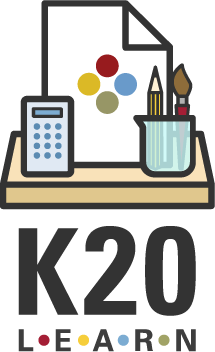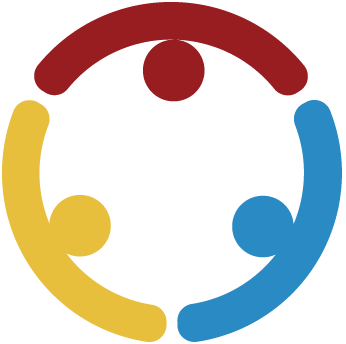Summary
Students reflect on their plans after high school and explore various post-secondary education (PSE) options through a virtual campus scavenger hunt. Working in groups, they research assigned campuses, create presentations as “admissions recruiters,” and share their findings with the class. Finally, students evaluate which PSEs best align with their personal goals.
Essential Questions
What is college life like?
What do I need to know about a college before deciding to go there?
Snapshot
Engage
Students envision life after high school and share their ideas.
Explore
Students complete a virtual scavenger hunt to research PSE campuses.
Explain
Students put themselves in the position of a recruiter for the PSE and create a presentation to pitch the campus they explored to others.
Extend
Students consider what they want to know about a PSE to make a decision about which one might appeal to them. [Optional: Students attend a campus visit]
Evaluate
Students evaluate the information presented to them about the PSEs and make decisions about which ones appeal to them the most.
Materials List
Presentation Slides (attached)
Group Scavenger Hunt (attached; one per group)
Campus Gist (attached; one per student)
Blank paper (one per student)
Three colors of sticky notes (one of each color per student)
Learning Goals
Analyze personal goals for life after high school
Share important elements to consider about college life
Reflect on and share what you are looking for in a college
Engage
20 Minute(s)
Use the attached Presentation Slides to guide the activity. Introduce the lesson using slides 1–4. Move to slide 5, Distribute blank paper and invite students to draw what their life might look like after high school, adding as much detail as they can.
Give students time to work then pair them up to share. Display slide 6. Bring the class together and ask, “What are your plans after high school?” Encourage a few students to share highlights from their drawings. Ask if anyone saw something in their partner’s picture that they hadn’t thought of themselves.
Explore
40 Minute(s)
Place students in groups of 3–4 or allow them to select groups themselves. Assign either a Post-Secondary Education (PSE) campus to each group, or allow groups to pick from the list you generated. Distribute the Group Scavenger Hunt handout and review the expectations on slide 7.
Have groups use keywords to research information about their assigned campuses in order to complete their Group Scavenger Hunt handouts. Encourage students to rely on credible sources, focusing on “.edu” and “.org” websites. Invite them to go beyond the required questions and collect interesting facts they discover along the way.
Explain
60 Minute(s)
Display slide 8 to introduce the presentation expectations. Explain that students are now the classroom experts on their campus. At a campus, the person who knows a lot about the culture of the school and prepares to share that with others is called an “admissions recruiter.” This person needs to highlight all that is great about the school to make others want to attend.
Explain to students that they are now the admissions recruiter for their PSE and need to create a presentation to share essential information about their PSE with the rest of the class. Each group creates a presentation of up to six slides that highlights key information from their scavenger hunt, along with any additional facts that make their campus stand out. Encourage students to focus on persuasive and engaging content—the goal is to make their peers want to attend their campus.
At the end of this phase, students prepare to “pitch” their PSE to the class.
Extend
40 Minute(s)
Display slide 9 and distribute a copy of the Campus Gist handout to students. Tell students to use the Gist strategy to take notes on the PSE presentations to inform their final decisions on which they would most likely attend based on the presentations. Remind students to evaluate each campus based only on the information presented during class rather than relying on outside knowledge.
Groups present their assigned PSE presentation as if they are an admissions recruiter for their PSE. Give each group about 5-minutes to present, adjusting time as needed based on class size. After each presentation, students record their impressions and reactions on their Gist handouts.
Evaluate
10 Minute(s)
After all presentations, have students vote on which PSE they would most like to attend as a student. Using the Sticky Bars strategy, give each student three separate colored sticky notes. Each color corresponds with either third, second, or first place. Students should place their individual sticky notes on their top three choices using the appropriate sticky note colors.
Ask students to share out what influenced their choices.
In their presentation small groups, have students reflect on if there were things they should have highlighted about their PSE that they left out from their presentation. Remind students that we may not learn everything about a school in one search or even one in-person visit so it is important to continue learning about a school and making sure it matches with the goals they drew for themselves earlier in the lesson.
Follow-Up Activities
40 Minute(s)
Invite students to use College Board’s Big Future to complete a personalized college search based on their interests. Encourage them to compare these results to their scavenger hunt findings and identify at least one PSE that aligns with their goals.
Research Rationale
College can be a life-altering experience for students, and not only academically. Here are just a few of the ways in which college can change students' lives for the better: Earning a bachelor's degree allows students to earn, on average, $1 million more than high school graduates over the course of their careers (Abel & Deitz, 2014). College offers students an opportunity to build relationships with mentors and peers that can benefit them throughout their careers (Campbell, Smith, Dugan, & Komives, 2012). College graduates tend to have more job satisfaction, jobs that offer a greater sense of accomplishment, more independence and opportunities for creativity, and more social interactions in their jobs than noncollege graduates (Oreopoulos & Petronijevic, 2013). College graduates increase their chance of employment. Over the last 20 years, the unemployment rate for college graduates has been approximately half that of high school graduates (Bureau of Labor Statistics, 2018). College helps students develop skills that prepare them for careers in the tech-driven economy, including nonroutine, abstract skills that aid in problem solving, multitasking, and creativity (Oreopoulos & Petronijevic, 2013).
Resources
Abel, J. R., & Deitz, R. (2014). Do the Benefits of College Still Outweigh the Costs? Current Issues in Economics and Finance, 20(3).
Bureau of Labor Statistics, (2018). Labor force statistics from the current population survey. Retrieved from: https://www.bls.gov/cps/cpsaat07.htm
Campbell, C.M., Smith, M., Dugan, J.P., & Komives, S.R. (2012). Mentors and College Student Leadership Outcomes: The Importance of Position and Process. The Review of Higher Education 35(4), 595-625. https://dx.doi.org/10.1353/rhe.2012.0037.
College Board. (2022). College search. Big Future. https://bigfuture.collegeboard.org/college-search
K20 Center. (n.d.) Sticky bars. Strategies. https://learn.k20center.ou.edu/strategy/129
K20 Center. (n.d.) Gist. Strategies. https://learn.k20center.ou.edu/strategy/3289
Oreopoulos, P., & Petronijevic, U. (2013). Making College Worth It: A Review of Research on the Returns to Higher Education (No. w19053; p. w19053). National Bureau of Economic Research. https://doi.org/10.3386/w19053


